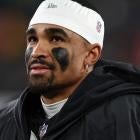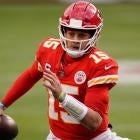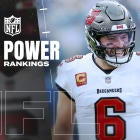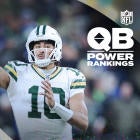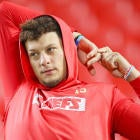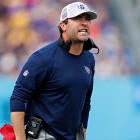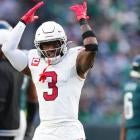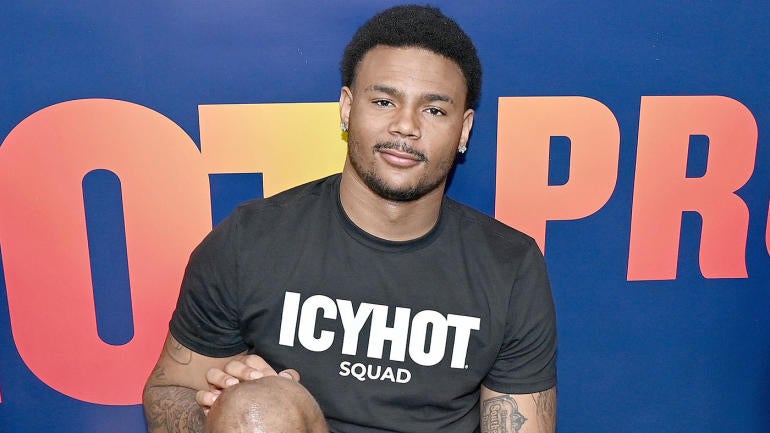
LAS VEGAS -- Watching University of Texas tight end Ja'Tavion Sanders work out with New York Giants star Darren Waller and Ohio State's Cade Stover, it's easy to see why he is considered one of the top NFL Draft prospects at his position and a potential second-round pick. Sanders has decent size at 6-foot-3, 245 pounds, and the speed numbers he posted at the NFL Combine and his pro day (4.69 seconds in the 40-yard dash, 1.6 in the 10-yard split) show up when he runs through his routes on air.
And watching him on tape, where his elusiveness and after-catch creation abilities stand out as some of his best traits, it's hard to figure why the rest of Sanders' athletic testing at the pro day didn't go quite as well. He posted below-average numbers in the vertical (30 inches) and bench press (eight reps), and his broad jump (9 feet, 6 inches) and shuttle time (4.32 seconds) were merely average.
To hear Sanders tell it, those results were the product of amping himself up too much getting ready for the tests.
"I just overestimated my warmup at my pro day testing," said Sanders, who spoke to CBS Sports as part of a promotional event for Icy Hot. "I had a lot of adrenaline rushing, you know what I'm saying? It was coaches everywhere. So I just kind of overestimated it, thinking that adrenaline was going to help me. So that was on me. That's why my numbers was bad, but I definitely, definitely play faster on the field. I feel like my film is showing that."
Sanders knows that his skill as a pass-catcher -- his ability to win both on his routes and after the catch -- is what makes him attractive to NFL teams, but he also knows that he's not going to get on the field all that often, or all that early, if he can't block.
"I know it's one of my weaknesses for sure," Sanders said. "And I've been working on that since I've declared for the combine, I know whatever team I [go to], they're gonna help me progress. In that aspect, I know it's a weakness. I've been trying to work out on myself, so I know whoever [drafts me], they're gonna help me get right, so I can be on that field."
As for how, exactly, to do that, and where he needs to improve, Sanders has a plan and has already identified the areas of weakness. And while his lack of ideal size as a blocker may seem like the thing that holds him back, Sanders thinks he can make up for it with fundamentals and technique.
"It's definitely fundamentals, footwork ... I never knew it was this much footwork when it came to blocking," he said. "So, footwork, hand placement, just really understanding defenses, understanding leverage, how they play you. And then just understanding your offensive scheme, like where's the inside zone, wide zone, trap, whatever that may be."
Mastering those fundamentals is not necessarily viewed as the key to early success in the NFL, because most people tend to focus on the receiving stats for tight ends. But you can't catch passes if you're not on the field, and you won't be on the field if you can't block. That's largely why tight ends have generally taken a bit longer to get up to speed in the NFL. It's historically been pretty rare to see tight ends make a receiving impact as rookies, and most tight ends have tended to truly blossom when they hit their second contracts.
That is, until last year. Sam LaPorta was drafted by the Lions near the top of the second round and immediately became one of their top pass-catchers. Dalton Kincaid emerged as a strong complementary option for Josh Allen. Luke Musgrave and Tucker Kraft each had stretches of success in Green Bay. Will Mallory didn't get a ton of usage for the Colts, but he finished in the top 10 in yards per route run among the 72 tight ends who ran 100 routes or more.
So, it suddenly seems much more realistic for a tight end to make an early pass-catching impact.
"I feel like they came into the league with the right mindset. With the right attitude, maybe playing with a chip on the shoulder as well," Sanders said. "And then guys like a LaPorta and [Michael] Mayer, they're like the new-age tight ends -- just like me, Cade [Stover], and Brock [Bowers]. I feel like if we come in with that mindset -- like we come here to take your job because it's business -- if we come in with that mindset, I feel like we're all gonna be all right."
Of course, the recent rookies aren't the only guys to emulate if you want to find NFL success at one of the most difficult positions to find it. There are plenty of stars still out there, plying their trade even as they get into their 30s. It's no surprise that Sanders identifies a few of the best as players he tries to steal from when he watches them on tape.
"Guys like Darren [Waller], Travis [Kelce], [George] Kittle, even like [Sam] LaPorta," Sanders said. "They all understand leverage, they understand defenses, they got a good relationship with their quarterback. That's the most important thing, because if you and your quarterback are on the same page, it's ain't no telling what's going to happen."









